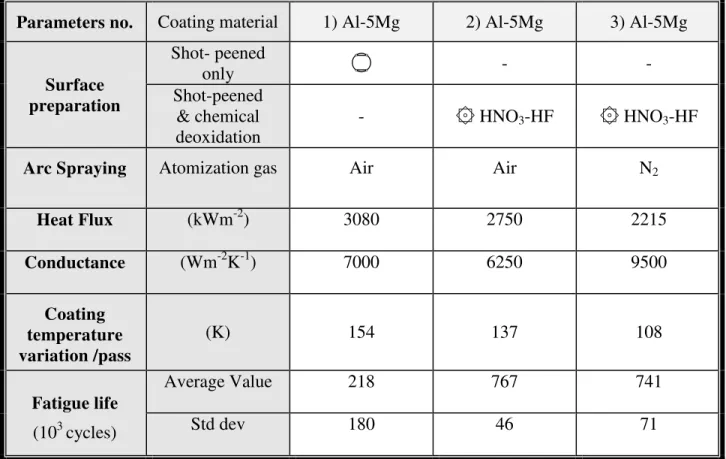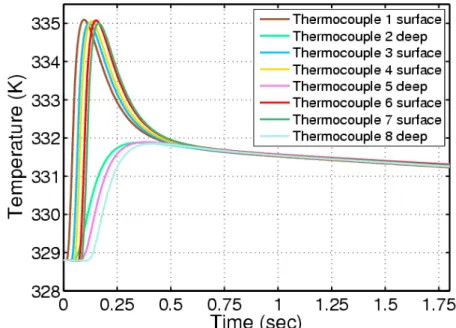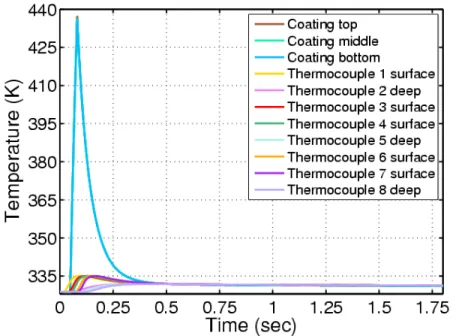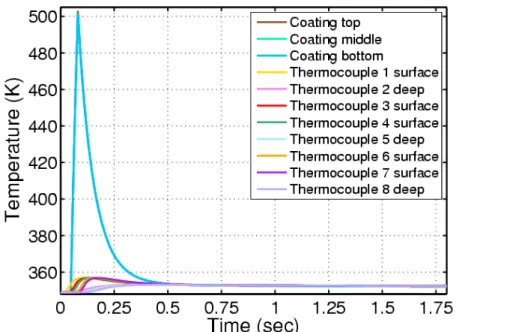Publisher’s version / Version de l'éditeur:
11th International LS-DYNA Users Conference 2010 : June 6-8, 2010, Dearborn, Michigan, USA, pp. 19-13-19-23, 2010-06-06
READ THESE TERMS AND CONDITIONS CAREFULLY BEFORE USING THIS WEBSITE.
https://nrc-publications.canada.ca/eng/copyright
Vous avez des questions? Nous pouvons vous aider. Pour communiquer directement avec un auteur, consultez la Questions? Contact the NRC Publications Archive team at
PublicationsArchive-ArchivesPublications@nrc-cnrc.gc.ca. If you wish to email the authors directly, please see the first page of the publication for their contact information.
This publication could be one of several versions: author’s original, accepted manuscript or the publisher’s version. / La version de cette publication peut être l’une des suivantes : la version prépublication de l’auteur, la version acceptée du manuscrit ou la version de l’éditeur.
Access and use of this website and the material on it are subject to the Terms and Conditions set forth at
Heat transfer Simulation to determine the impact of Al-5Mg arc sprayed coating onto 7075 T6 alloy fatigue performance
D'Amours, G.; Arsenault, B.; Breton, F.; Dubé, D.
https://publications-cnrc.canada.ca/fra/droits
L’accès à ce site Web et l’utilisation de son contenu sont assujettis aux conditions présentées dans le site LISEZ CES CONDITIONS ATTENTIVEMENT AVANT D’UTILISER CE SITE WEB.
NRC Publications Record / Notice d'Archives des publications de CNRC:
https://nrc-publications.canada.ca/eng/view/object/?id=3c7b512c-7ce2-47bc-9db5-b870e910326d https://publications-cnrc.canada.ca/fra/voir/objet/?id=3c7b512c-7ce2-47bc-9db5-b870e910326d
Heat Transfer Simulation to Determine the Impact of
Al-5Mg Arc Sprayed Coating onto 7075 T6 Al Alloy Fatigue
Performance
G. D’Amours, B. Arsenault, F. Breton
National Research Council Canada, Aluminium Technology Centre, Québec, Canada
D. Dubé
Université Laval, Québec, Canada
Abstract
Aluminum-5% magnesium coatings was deposited by arc spraying onto aircraft Al 7075 T651 structural alloy for corrosion protection while required to maintain the substrate material fatigue performance integrity. Fatigue performance of coating system is complex and in order to better understand the variability of the fatigue performance of coatings, heat flow in substrate was studied and simulated to determine the temperature evolution during arc spraying in both substrate and coating for different process parameters. Experimental temperature measurements, theoretical calculations and simulation were carried out to extrapolate the coating temperature with respect to coating process variables and surface preparation.
Both flux and conductance were identified by an inverse method to reproduce experimental temperature measurements. The thermal transient solver of LS-DYNA® was used to simulate the time-dependence of heat flux in the coating during successive depositions. The benefit of that model is its capability to predict the temperature distribution and evolution in time in a sample. Samples were made of Al 7075 T651 alloy and were 80 mm in length by 25 mm wide and 7 mm thick. A coating thickness of 250 μm was reached. It was the spray thermal energy that was taken into account in the model as the thermal load. The quality of the thermal contact between the substrate and coating was also included in the model and conductance was defined to control the amount of heat transferred at the interface.
Coating performance was evaluated in term of fatigue properties, bond strength, and interface quality of as deposited coatings. The superior fatigue resistance of the coated alloy relies on low heat input process parameters and surface preparation that favor high interface conductance to keep low coating temperature during the coating process. Surface preparation, arc current and atomizing gases play all a key role to provide a fatigue resistant coating.
Introduction
Aluminum alloys as a light structural metal, play an important role in the manufacturing of air and ground vehicles. The alloying of the 2xxx and 7xxx aluminum alloys provides high specific tensile strength but makes them more sensitive to localized corrosion and environmentally assisted cracking corrosion. In order to provide a corrosion protection to structural Al alloys, Al-5Mg arc spray coatings have been successfully evaluated as an effective corrosion protection strategy [1]. Indeed arc sprayed Al or Al-5Mg coatings performed like a cladding anodic coating to confer cathodic protection to corrosion sensitive aluminum alloy.
However, when temperature sensitive alloys such as the Al7075 T651 are concerned, thermal spraying of protective coatings can be detrimental to fatigue life. Furthermore, defects at the coating-substrate interface such as porosity, micro-gap or grits can affect mechanical properties. Therefore the present study evaluates the fatigue performance of one successful anodic corrosion protective coating, the Al-5Mg arc sprayed coating. Two atomizing gazes and three surface preparation techniques were used in order to validate the fatigue integrity of arc sprayed coated Al 7075 T651 alloy and the coating process reliability for aircraft aluminum structure protection.
In order to understand the large variability in the fatigue performance of coatings, heat flow in substrate was studied and simulated to determine the temperature evolution during arc spraying in both substrate and coating. Experimental temperature measurements, theoretical calculations and simulation were carried out to extrapolate the coating temperature with respect to coating process variables and surface preparation.
Experimental procedure
Substrate and Surface PreparationThe substrate material consists of Al 7075-T651 aluminum alloy. Three different surface preparation procedures prior to deposition were evaluated:
1. Shot peenng wth 300 μm sphercal ZrO2 particles. (SP)
2. Shot peening and chemical deoxidation with H3PO4 (CE1)
3. Shot peening and chemical deoxidation with HNO3-HF (CE2)
The chemical deoxidation (CE) was performed in order to remove most of the native aluminum oxide, the hydroxide film and secondary phases from the top surface of specimens. The detailed procedure for chemical deoxidation is described in [2].
Coating Processes and Characterization:
Coatings of about 250 μm thck Al-5Mg were produced (deposited) onto Al 7075-T651 alloy substrates by arc sprayng. The arc sprayng was performed usng a “Smart Arc gun ™” wth Al-5Mg wires. Both air and nitrogen were used as atomizing gases. Parameters were selected for optimized bond strength properties. Arc spraying was performed using 100 A current for all the deposition conditions in this study in order to reduce the heat input in the substrate.
Experimental Temperature Measurements
To evaluate the heat flux in the substrate, eight type K thermocouples having Alumel and Chromel wires of 127 µm in diameter (each wire) were used. Thermocouples were inserted in the substrates after drilling 1 mm holes at two different depths in the sample: respectively at 500 µm and 4000 µm depth from the coating-substrate interface for recording the temperature. The depth of the thermocouple was positioned with a precision of ±50 µm. Contacts between the thermocouple hot junctions and the bottom of the drilled holes were provided by springs.
Samples were made of Al 7075-T651 alloy and were 80 mm in length by 25 mm wide and 7 mm thick without coating. In laboratory, during the creation of one coating layer, thermocouples placed in the substrate measured its temperature evolution. Figure 1 shows typical temperature curves recorded during a test with the following conditions: shot peened and de-oxidation with HNO3-HF, Al-5Mg as coating material and nitrogen as atomization gas. The transverse speed of
the arc gun was 0,76 m/sec. For a substrate length of 80 mm, the time required for the deposition of one layer is 0.105 sec.
In figure 1, the curve with peak correspond to the temperature increase just under the substrate at a depth of 500 µm from the coating-substrate interface during the deposition of one coating layer. The other curve corresponds to the temperature increase deeper in the substrate at a depth of 4000 µm from the interface. After the layer deposit, temperature is transmitted through both the substrate and the coating during the cooling before the next layer deposition. All the thermocouples reached the same temperature before deposition of the next layer.
Temperature Prediction by Finite Element Modeling
In this study, finite element modeling was used to predict (forecast) the temperature at the outer (top) surface of the deposit during the coating process. To evaluate the temperature, an inverse method was used. With currents of 100 amperes for the deposition, 12 layers of deposit were necessary to reach a coating thckness of 250 μm. The thermal transent solver of LS-DYNA was used to simulate the thermal energy transmitted during the deposition of one layer by arc spraying. The spray is not directly included in the model neither meshed. Actually it is the incident thermal spray energy that is taken into account in the model.
In order to reproduce the heat transmitted from the incident thermal spray to the coating and from the coating to the substrate, a transient thermal model was developed [3, 4]. The benefit of that model is its capability to predict the temperature distribution and evolution with time in the sample. Figure 2 shows the mesh used in the model. The sample was divided in two parts that are included in the model: the coating and the substrate. Between these two parts, a thermal contact is introduced and a heat transfer conductance characterized that contact. This parameter controls the amount of heat transferred at the interface. When the thermal contact at the interface is good, the conductance is high but defects similar to micro-gaps at the interface reduce it.
Figure 1: Temperature evolution of the substrate during one layer deposit (Al-5Mg, HNO3
In figure 2, the enlighted circular region over the coating surface represents the spray deposit at one moment during the process. During simulation, this circular region moves over the coating surface replicating the gun movement during the real deposition process. The spray deposit is modeled by a thermal flux (within this circular region) normal to the coating surface while heating the coating and the substrate during the process.
In the longitudinal and lateral direction of the substrate, mesh has respectively 64 and 20 elements. To completely reproduce the gun movement over the coating surface, 83 different boundary flux, segment sets and curves of flux as function of time are defined for heat transfer. Each boundary has the maximum flux for a specific time interval and zero flux for the rest of the simulation. Each successive boundary flux has its interval at different times to completely cover the heat transfer movement over the coating surface. For the thermal implicit solver of LS-DYNA, time step is adjusted to solve three steps for each boundary flux and time interval.
Convection boundary conditions are also used for the thermal analyses. On the coating top surface, 85 different sets of segments are activated and deactivated according to the motion of the thermal flux. Figure 3 shows an example of corresponding set of segments. For the other outer surfaces of the model, convection is also applied. The convection coefficient is identified by an inverse method. Concerning experiments, temperature is measured during successive depositions in the substrate but also during its cooling for a period of 100 sec. Convection is responsible of that cooling and different convection coefficients are tried in the model up to achieve comparable solutions between experiments and predictions at the cooling end. A convection coefficient of 46 Wm-2K-1 has been identified. Radiation is neglected in the model.
For the thermal model of LS-DYNA, aluminium thermal properties such as specific heat and thermal conductivity need to be defined. It is assumed that the coating and the substrate aluminium alloys have the same thermal physical properties. It is also assumed that these properties are isotropic in LS-DYNA. Physically, successive depositions lead to a lamellae type coating microstructure that can affect thermal conductivity in direction normal to the coating surface. However, considering the coating thickness is about 250 µm, a variation of thermal conductivity leads to limited thermal gradients through the thickness.
The thermophysical properties of the Al 7075 alloy are obtained from the Material Property Database™ software [5]. The density is fixed to 2719 kg/m3 and both thermal conductivity and specific heat were defined as function of temperature. Figure 4 shows the evolution of these properties.
Figure 3: One set of segments for top surface convection
Figure 4: Thermophysical properties of aluminium AA7075 alloy used in the finite element model [5]
Results and discussions
Fatigue Performance:Figure 5 shows the fatigue performance of arc sprayed Al-5Mg coatings with respect to the selection of atomization gas (air or nitrogen), arc current and surface preparation. The use of nitrogen combined to grit blasting show a significant apparent improvement although the results are scattered. The combination of shot peening (SP) with nitrogen as atomizing gas look promising but was not successful because the coating bond strength was not adequate. Consequently, chemical de-oxidation (CE) was considered in combination with nitrogen atomization gas and shot peening. Actually the fatigue performance response for this combination of shot peening and CE was significantly improved for both atomizing gases: air and nitrogen as shown in Figure 5.
The role of the surface preparation using de-oxidation in fatigue performance needs further study to explained such increased fatigue performance related to the surface preparation conditions between shot peened only and the shot peened combined with chemical de-oxidation. Low heat input arc spraying parameters were chosen for heat transfer calculation in Table 1. Among the three conditions selected, two coatings were deposited using air as atomizing gas and one using nitrogen in order to reduce the amount of oxide in the coating microstructure. Those three tests were conducted using 100 A and the temperatures were monitored with eight thermocouples into the substrates during the deposition in order to evaluate the heat transfer into the substrate.
Figure 5: Fatigue performance of Al 7075-T651 substrate coated with Al-5Mg alloy under 225 MPa cyclic load at R=-1. For different surface preparations and atomizing gases
Table 1 - Al-5Mg arc coating properties with respect to coating process and surface preparation parameters
Parameters no. Coating material 1) Al-5Mg 2) Al-5Mg 3) Al-5Mg
Surface preparation Shot- peened only - - Shot-peened & chemical deoxidation - HNO3-HF HNO3-HF
Arc Spraying Atomization gas Air Air N2
Heat Flux (kWm-2) 3080 2750 2215 Conductance (Wm-2K-1) 7000 6250 9500 Coating temperature variation /pass (K) 154 137 108 Fatigue life (103 cycles) Average Value 218 767 741 Std dev 180 46 71
Surface prep. by shot peening. Surface prep. by shot peening and chemical de-oxidation.
Heat Transfer Calculations:
For each processing condition given in Table 1, both the heat flux of the circular region and heat transfer conductance at the interface coating substrate, were identified by an inverse method to obtain the experimental temperature measurements in the coating. A contact of type *CONTACT_AUTOMATIC_SURFACE_TO_SURFACE_THERMAL is used to introduce the heat transfer conductance between two sets of segments respectively under the coating and over the substrate. To complete the model, other parameters such as the initial temperature of the coating and the substrate were fixed according to the thermocouple measurements. Ambient air temperature and convection coefficient of the free surfaces of both coating and substrate were also adjusted according to preliminary tests.
For each simulation condition, the heat flux transferred from the spray to the coating is the first parameter identified by the inverse method. According to figure 1, heat flux is proportional to the temperature increase of the substrate between the time of 44.5 sec and 46.375 sec. Several simulations were conducted with different flux values until differences between the predicted temperature and measurements were negligible (less than 0.1 K). The same procedure was used for the conductance. From figure 1, the effect of the conductance at the interface is observed by the temperature increase in the substrate during the deposit from 44.5 to 44.875 sec. The higher the peaks, the higher is the conductance at the interface. Once again, different values for the
conductance were considered in the model until the differences between predicted temperature and the measured temperature in the substrate was below 0.1 K. Predicted temperatures for the same condition are illustrated in figure 6. The eight nodes are located corresponding to the thermocouple locations in the substrate during experiments. Thermocouple 1 is the first one to receive heat and thermocouple 8 is the last one.
The inverse method allowed identifying the heat flux of the spray and the conductance at the interface to predict the same temperature at the beginning of the deposit, for the peak values and at the end of the deposit. Predicted and measured temperatures for the same condition are compared in figure 7.
Main difference between measures and predictions is located after the peak associated to the deposit. Predicted heat conduction in the substrate seems to be slightly faster. Table 1 provides the heat flux of the spray and the conductance at the interface for the three coating conditions. Analysis:
The finite element model also predicts the temperature at the outer surface of the deposit during the process. Two examples are given for the following two conditions below. For the Al-5Mg coating using nitrogen as atomizing gas onto CE2 de-oxidized substrate, Fig. 8 shows the temperature evolution of some nodes located in the substrate and in the coating. The temperatures of the nodes in the coating have the highest peaks. The predicted temperature at the outer surface of the coating reaches 437 K during the deposition, which is 108 K higher than the temperature before the deposit. These temperature predictions are the result of an excellent coating process and an excellent surface preparation. These processing conditions led to samples with the highest fatigue life shown in Table 1.
At the opposite, for a condition related to an Al-5Mg coating material onto shot penned substrate without de-oxidation and using air as atomization gas, the inverse method indicates a lower conductance and the model predicts a higher temperature at the outer surface of the coating. Figure 9 illustrates the temperatures predicted by the model in the substrate and coating. The highest temperature predicted at the outer surface of the coating is of 503 K. This temperature is 154 K higher than the maximum temperature predicted in the substrate.
Figure 10 shows the fatigue performance of Al-5Mg coating with respect to the coating temperature increased / pass defined by the inverse method. The Al-5Mg coating perform very well by using the nitrogen as atomization gas combined with the chemical de-oxidation CE2, resulting with a lower coating temperature and a very good fatigue performance in the neighborhood of the as received Al 7075 fatigue life (801 422 cycles). Moreover, it is worth mentioning that Al-5Mg coating has also a good fatigue performance when sprayed with air and
of 137 K instead of 108 K for using nitrogen but lower than the 154 K for Al-5Mg sprayed with air without de-oxidation. Therefore the superior fatigue performance relies on lower heat input, using surface preparation techniques that favor high interface coating substrate conductance allowing a lower coating temperature during the coating process.
Figure 10: Fatigue properties of arc spray Al-5Mg coatings onto Al 7075 alloy with respect to Figure 9: Temperature distribution after deposit (Al-5Mg, no de-oxidation, air)
Conclusion
Fatigue performance of coating was studied in order to understand what makes some coating process parameters better in fatigue than others. Heat flow in substrate was studied and simulated to determine the temperature evolution during arc spraying in both substrate and coating. Experimental temperature measurements, theoretical calculations and simulation were carried out to extrapolate the coating temperature with respect to coating process variables and surface preparation.
To reproduce heat transfer from arc spraying, different surface segments were created, activated and deactivated one after the other to apply moving boundary normal surface flux to the coating. At the coating-substrate interface, a heat transfer conductance was introduced to reproduce contact quality and control the amount of heat transferred at this interface.
Finite element results showed that high coating interface conductance is beneficial. Indeed high coating interface conductance reduces the coating temperature during its deposition. Moreover the superior fatigue resistance of the coated alloy is observed for low heat input process parameters and for surface preparation that favor high interface conductance allowing low coating temperature during the coating process.
References
[1] B. Arsenault, E. Ghali, Prevention of Environmentally Assisted Cracking of Structural Aluminum Alloys by Al and Al-5Mg Thermal Sprayed Coatings Using Different Surface Preparation Techniques, Proceeding of the Aerospace Symposium, 45th Conference of Metallurgists (Met Soc 2006), Montreal, October 1st 2006
[2] B. Arsenault, E. Ghali, Prevention of Environmentally Assisted Cracking of Structural Aluminum Alloys by Al and Al-5Mg Thermal Sprayed Coatings Using Different Surface Preparation Techniques, Conf. of Metallurgiste (Com 2006), Aerospace Materials & Manufacturing: Symposium Proceeding, Montreal, Oct. 2006
[3] LS-DYNA theoretical manual, Livermore Software Technology corporation, 498 p., 1998
[4] LS-DYNA keyword user's manual, Version 970, Livermore Software Technology Corporation, 1564 p., 2003 [5] Material Property Database, JAHM Software Inc., version 6.32, 1999
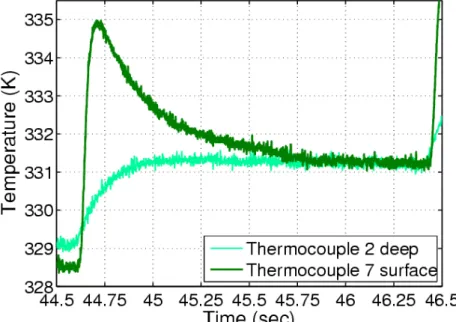
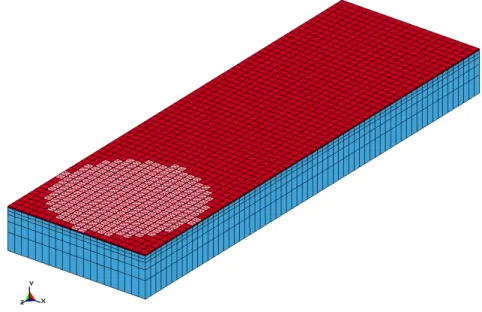
![Figure 4: Thermophysical properties of aluminium AA7075 alloy used in the finite element model [5]](https://thumb-eu.123doks.com/thumbv2/123doknet/14144656.470981/6.918.164.817.735.967/figure-thermophysical-properties-aluminium-alloy-finite-element-model.webp)

